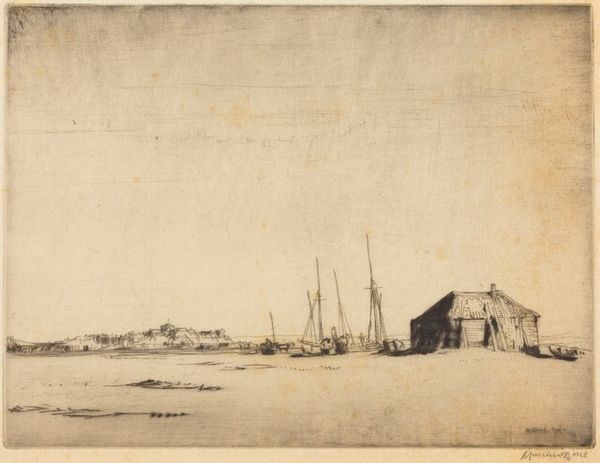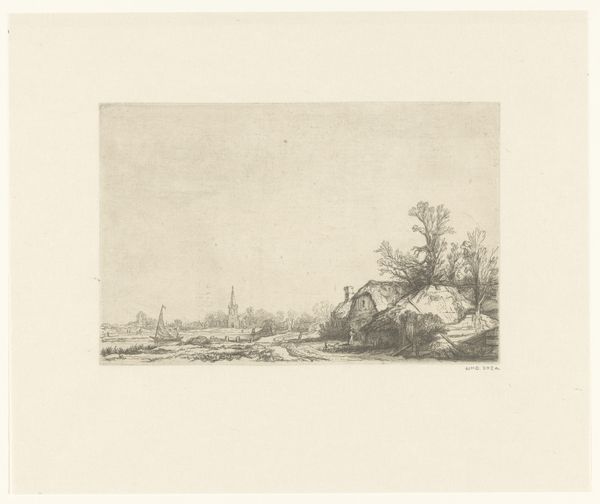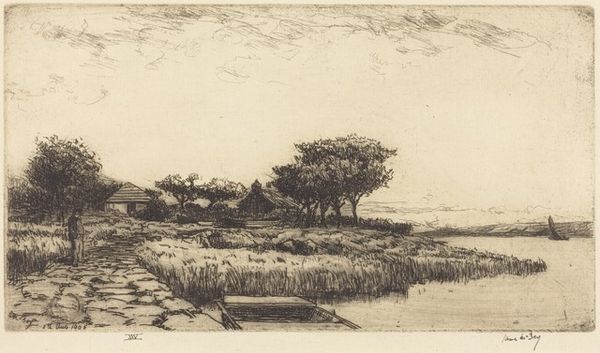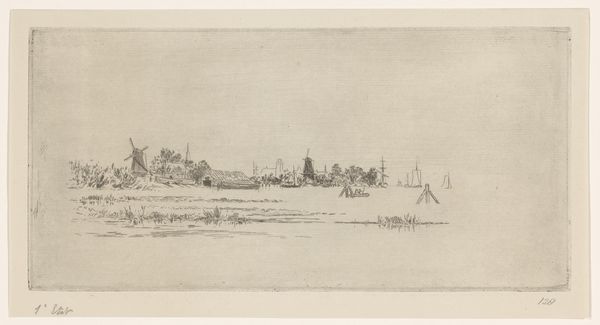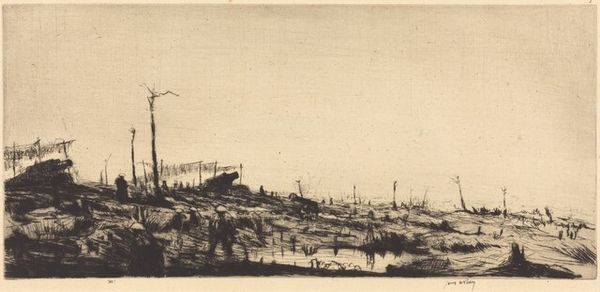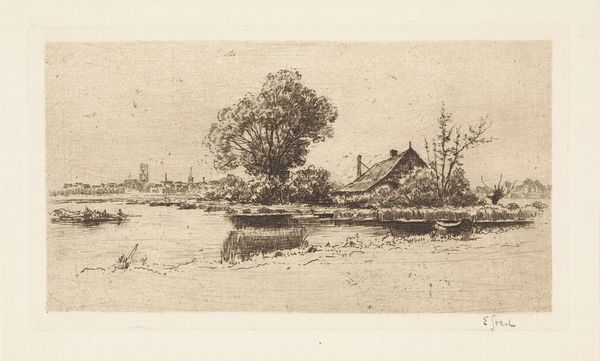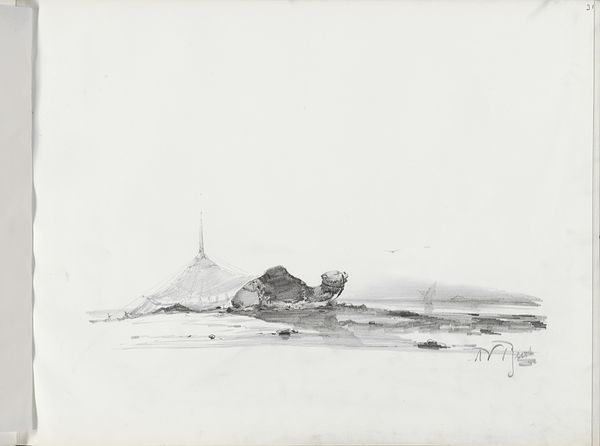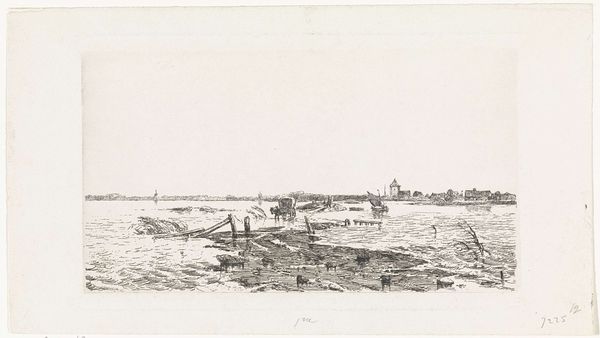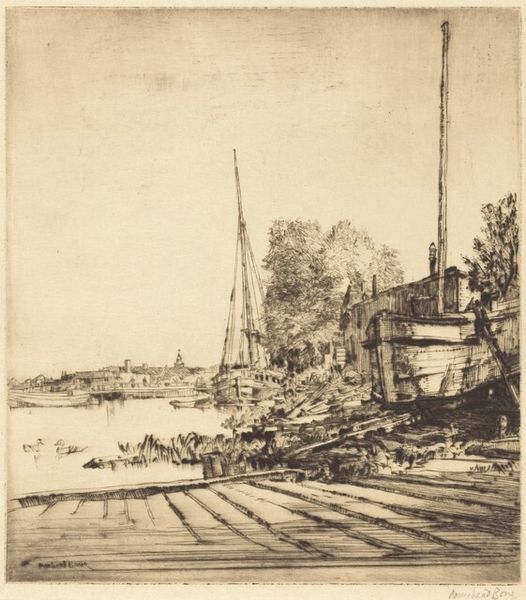
Copyright: National Gallery of Art: CC0 1.0
Curator: Before us is Muirhead Bone's "The Ypres Tower, Rye," an etching created in 1909. Editor: It has such a stark, wistful atmosphere. The tower looms, yet feels distant somehow, softened by the technique, perhaps. Curator: Absolutely. Bone was a master of etching, capturing a scene’s essence with minimal lines. We see here a convergence of landscape and cityscape themes common at the time. It highlights how cities and towns are defined by, and built upon, the very ground they occupy. Think about the tower as a signifier of civic power, of dominion. Editor: For me, the way Bone handles the medium itself is key. Notice the density of the lines in the foreground – seemingly scratched into the plate with intention. It gives a tactile quality that speaks volumes about labor. He almost relishes the materiality. Are we meant to consider how it feels to live here as much as simply view the scene? Curator: I'd suggest that Bone is very conscious of the Ypres Tower's significance as a historical site, and I agree that it has everything to do with the landscape and how people actually experienced being here. These towers speak to a place’s heritage, its layered histories… This wasn’t a mere snapshot but a carefully composed reflection of place. The etching revives a collective understanding of the town’s history in a single view. Editor: Perhaps a touch sentimental then, because you can almost feel the grit between your fingers through the ink on the page. It reminds us how integral materials are. Etching wasn’t a pristine process – each plate tells its own story of wear and creation. How many of these were printed, sold, consumed? Each print has its own life. Curator: The image resonates powerfully within the British tradition of topographical art, popularised and propagated in no small way by its dissemination via the medium of print. But I wonder – did Bone intend this piece to glorify this site or something else? I think the image can be appreciated even without knowing the history of the depicted locale. Editor: Fair enough, and maybe it shows me there's still much to explore beneath the surface in terms of the production history, of labour, materiality, and ultimately consumption here. Curator: An insight that, I think, reveals a richer understanding of the place that Bone brought to our attention today.
Comments
No comments
Be the first to comment and join the conversation on the ultimate creative platform.
